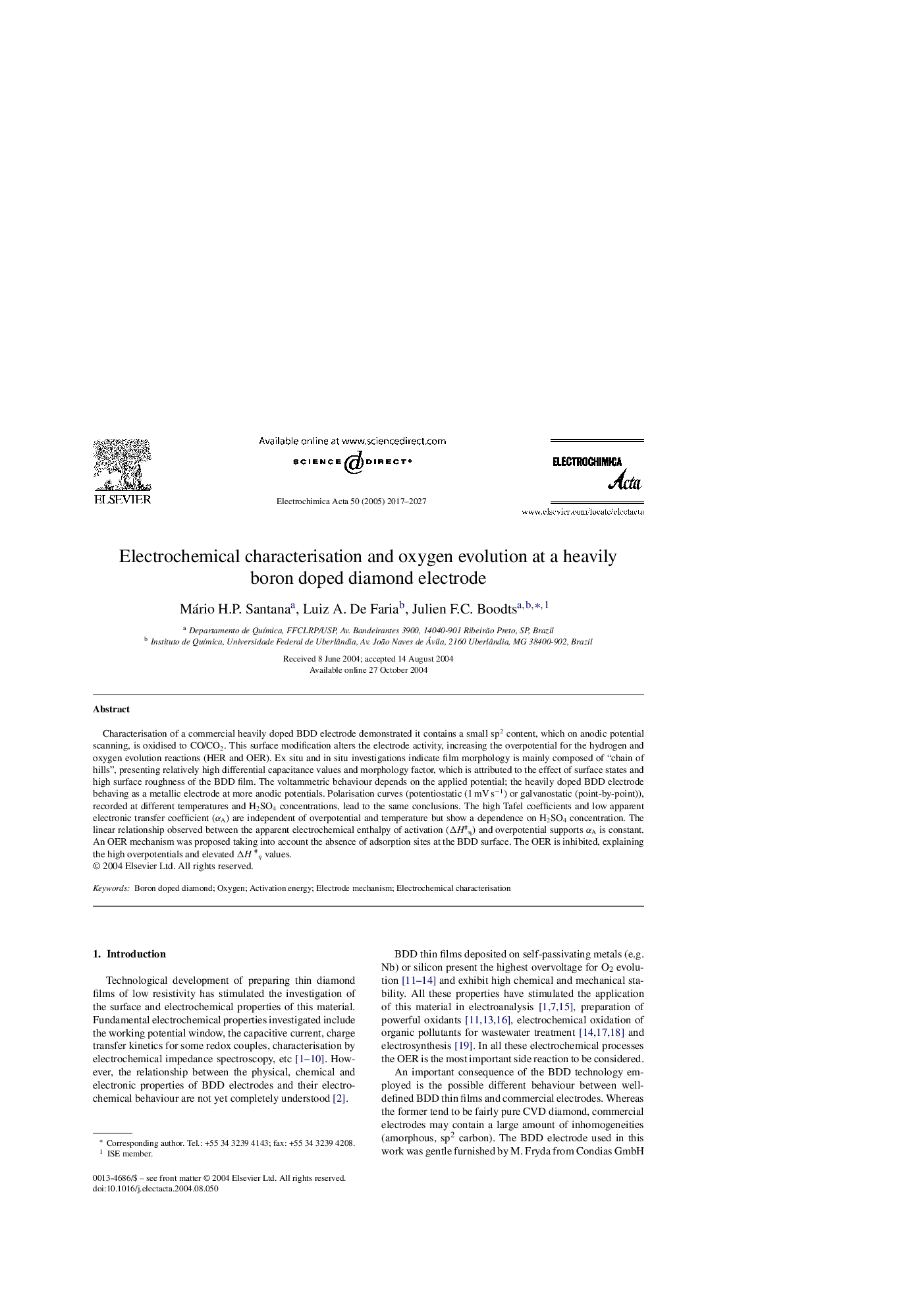| Article ID | Journal | Published Year | Pages | File Type |
|---|---|---|---|---|
| 197433 | Electrochimica Acta | 2017 | 11 Pages |
Characterisation of a commercial heavily doped BDD electrode demonstrated it contains a small sp2 content, which on anodic potential scanning, is oxidised to CO/CO2. This surface modification alters the electrode activity, increasing the overpotential for the hydrogen and oxygen evolution reactions (HER and OER). Ex situ and in situ investigations indicate film morphology is mainly composed of “chain of hills”, presenting relatively high differential capacitance values and morphology factor, which is attributed to the effect of surface states and high surface roughness of the BDD film. The voltammetric behaviour depends on the applied potential; the heavily doped BDD electrode behaving as a metallic electrode at more anodic potentials. Polarisation curves (potentiostatic (1 mV s−1) or galvanostatic (point-by-point)), recorded at different temperatures and H2SO4 concentrations, lead to the same conclusions. The high Tafel coefficients and low apparent electronic transfer coefficient (αA) are independent of overpotential and temperature but show a dependence on H2SO4 concentration. The linear relationship observed between the apparent electrochemical enthalpy of activation (ΔH#η) and overpotential supports αA is constant. An OER mechanism was proposed taking into account the absence of adsorption sites at the BDD surface. The OER is inhibited, explaining the high overpotentials and elevated ΔH#η values.
